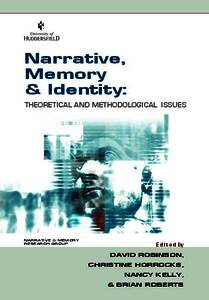Chronic widespread pain, in which pain is experienced in multiple bodily
areas, is estimated to affect between 4.7% and 11.2% of the population but
little is known about the experiences of this group of people. Previous research
on chronic illness has offered insights into the ways in which sufferers attempt
to construct new identities or maintain old ones, which may be relevant to the
experience of people with chronic widespread pain. This paper is based on
ongoing research which uses in-depth interviews, diaries and family member
interviews to explore the experiences of this group of people. The paper uses
the accounts of two men and their spouses to explore the ways in which key
features of chronic widespread pain may influence identity. For Harry, the
invisibility of pain raises possible accusations of ‘idleness’ or malingering,
leading to attempts to maintain identity as a worker, despite the uncertainties of
a chronic condition. Harry attempts to reduce the impact of his illness on his
identity, through presenting himself as part of the wider group of the
unemployed, leading to additional tensions. In contrast, Duncan creates a new
identity as a ‘household engineer’, demonstrating his physical competence and
control over aspects of his condition through performance of household chores.
He, and his wife, present his pain onset as a positive opportunity to renegotiate
their roles within the family. The accounts of Harry and Duncan provide
insight into the experiences of living with chronic widespread pain and the
different ways in which lost identities can be recreated.
Download (46kB) | Preview
Downloads
Downloads per month over past year
Downloads per month over past year for
"Chapter_16__Jane_Richardson__Bie_Nio_Ong_and_Julius_Sim.pdf"
Downloads per month over past year for
"cover03.jpg"

![cover03.jpg [thumbnail of cover03.jpg]](https://eprints.hud.ac.uk/5027/2.hassmallThumbnailVersion/cover03.jpg)


 Tools
Tools Tools
Tools